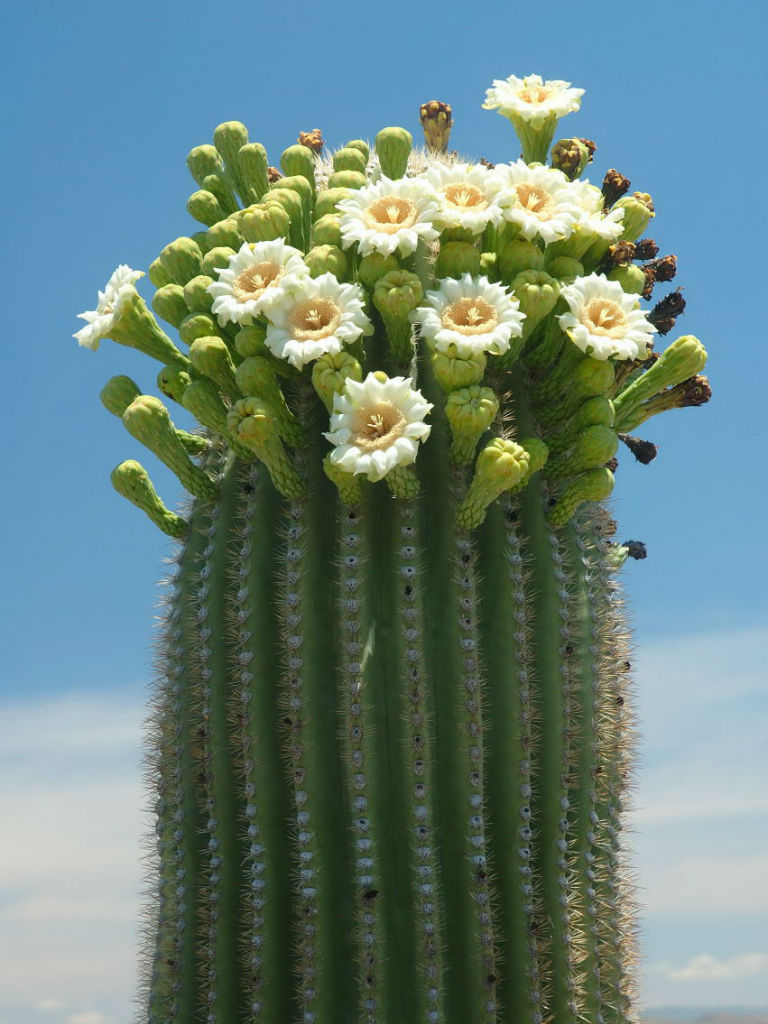Carnegiea gigantea, popularly known as the Saguaro cactus, stands as an emblematic figure of the Sonoran Desert. Majestic and towering, this iconic succulent captures the imagination of both botanists and casual admirers alike. But what is it about the Saguaro that evokes such fascination? Perhaps it is the sheer size and age of these cacti, or the striking spectacle of their arm-like appendages that seem to reach out towards the sky. Deeper still, the Saguaro encapsulates an intricate story of survival, adaptation, and ecological significance.
In this guide, we delve into the captivating world of Carnegiea gigantea. From its biological characteristics and habitat considerations to its cultural significance, conservation challenges, and unique adaptations, the Saguaro cactus reveals a multilayered narrative worthy of exploration.
The Anatomy of the Saguaro
The Saguaro cactus is unmistakable with its formidable stature, often growing to heights of up to 50 feet. Its impressive height and sprawling arms are not merely for aesthetic appeal; they serve essential functions in the plant’s survival.
A Structure Built for Survival
At first glance, the Saguaro’s exterior might appear uninviting, adorned with spines that seem to offer a prickly warning. However, these spines are an evolutionary marvel. They provide shade, mitigating the harsh rays of the desert sun while also reducing water loss through evaporation. The cactus’s thick, ribbed body allows it to expand and store copious amounts of water during the rainy season, a vital adaptation in a climate where precipitation is scarce.
An Exquisite Lifecycle
The lifecycle of the Saguaro is equally fascinating. Typically, these cacti start their life as tiny seeds that can lay dormant for years, waiting for the perfect conditions to germinate. A small amount of rain can trigger a miraculous transformation, allowing the seed to tap into the moisture-rich soil. Upon germination, the young cactus grows slowly, often taking over a decade to reach its first significant height. A fully mature Saguaro can live for over 150 years, with some specimens estimated to be over 200 years old.
Flowers and Fruits: A Sign of Vitality
During the late spring and early summer months, the Saguaro adorns itself with beautiful, creamy white flowers that bloom predominantly at night. These blossoms are not only stunning but are also crucial for reproduction. Pollinated by birds and insects, the flowers give way to bright red fruits that ripen in late summer. These fruits, filled with seeds, offer sustenance to a plethora of wildlife. The cycle of blooming, fruiting, and seeding represents the intricate web of life fostered by the Saguaro.
The Habitats of Carnegiea gigantea
Understanding the Saguaro’s habitat provides insights into how this magnificent cactus thrives in the arid landscape of the Sonoran Desert. This ecological niche is characterized by extremes, and yet, the Saguaro flourishes.
In the Sonoran Desert, water scarcity is tempered by seasonal rains, and temperature fluctuations can be dire. Despite these challenges, the Saguaro’s deep and extensive root system allows it to draw moisture from the earth effectively. Its symbiosis with other desert flora and fauna further enhances its resiliency. The presence of the Saguaro indicates a vibrant ecosystem where numerous creatures, from birds to insects, interact dynamically with their environment.
Climate change is an ever-looming threat to the habitat of the Saguaro. With increasingly erratic weather patterns and heightened temperatures, the delicate balance of this ecosystem faces potential disruption. As drought conditions intensify, the survival of the Saguaro and the species that depend on it is at risk. Understanding these climate dynamics becomes vital for effective conservation strategies.
Your fascination with the Saguaro extends beyond its biological marvel; it intertwines with the history and culture of the region. However, urban expansion and development encroach upon the Sonoran Desert, threatening the natural habitats of these mighty cacti. Preservation organizations advocate for the protection of Saguaro populations through various means, including designated nature reserves and environmental education initiatives.
Cultural interpretations of the Saguaro run deep, symbolizing resilience in the face of adversity. Communities within the region hold deep reverence for these cacti, infusing local narratives with their historic presence.
The Saguaro is more than just a plant; it embodies the spirit of the American Southwest. It has become a cultural icon, represented in cuisine, art, and folklore. From the vibrant illustrations of Western-themed artworks to culinary uses of Saguaro fruit, these cacti have inspired generations. The cactus serves not only as a physical connection to the land but also as a cultural touchstone, drawing visitors and artists alike to its rugged beauty.
For indigenous communities, the Saguaro plays a significant role in traditional customs and spiritual practices. It is often viewed as a provider, unlocking fundamental elements of sustenance and survival within the arid desert. Rituals surrounding the harvesting of Saguaro fruit highlight the ethical relationship these communities have with their environment, emphasizing sustainability and respect.
Modern society continues to romanticize the Saguaro, with its images frequently employed in media and marketing, reinforcing the plant’s status as a symbol of endurance. However, this fascination must come with a responsibility towards conscientious stewardship. As advocates for the environment, people are urged to acknowledge the significance of the Saguaro while also actively participating in conservation efforts.
In summary, Carnegiea gigantea commands attention not simply for its majestic appearance but for the rich tapestry of ecological, cultural, and historical narratives it represents. The Saguaro cactus is a testament to resilience and an enduring symbol of the American Southwest. This iconic species propels curiosity and invites inquiry, leaving observers captivated by its presence and the deeper stories it embodies. As interest in this iconic cactus continues to grow, it is imperative to balance passion with preservation, ensuring that future generations can also marvel at this extraordinary natural wonder.

Leave a Comment